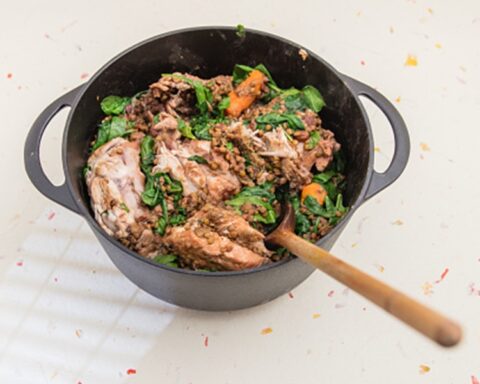NEW DELHI, December 23, 2023: Diet is important for those with arthritis, as five key spices can reduce inflammation and pain. Cartilage lining becomes roughened with osteoarthritis, making tendons and ligaments work harder – causing the swelling and bony spurs.
Over 210 million people in India suffer from arthritis or similar joint conditions, and while it is normally associated with the elderly, it can affect all people and children.
“Osteoarthritis is the most common type of arthritis in India. It most often develops in people in their mid-40s or older,” stated the experts. “It’s also more common in women and people with a family history of the condition. But it can occur at any age as a result of an injury or be associated with other joint-related conditions, such as gout or rheumatoid arthritis.”
A Mediterranean diet is often seen as good for people with arthritis, but here are five specific spices that can be added to food to help reduce inflammation.
Garlic
Garlic is well known as a healthy ingredient that adds taste to dishes. And like onions and leeks, it contains diallyl disulfide, an anti-inflammatory compound that tackles cytokines which helps create swelling. It is best to choose fresh garlic as that won’t contain preservatives.
Turmeric
Curcumin is an important chemical in turmeric roots for arthritis patients, as it blocks cytokines and enzymes. It is popular in curries and some other Asian dishes. With several trials showing its effectiveness, it works best with black peppers which help the body to absorb it.
Ginger
Gingerol and shagaol are found in ginger, and are both useful for stopping inflammation. Ginger can be used in many dishes, and some trials suggest it could also help to stop osteoarthritis developing. Another way to take ginger is to have it with boiling water as a tea.
Cinnamon
Cinnamon contains cinnamaldehyde and cinnamic acid, both of which have antioxidant properties that help inhibit cell damage caused by free radicals. But the Arthritis Foundation said that more research needs to be carried out on its positive use in tackling the condition. It is good to take it with other foods to add to the anti-inflammatory effect as on its own it may not have much of a therapeutic effect.
Cayenne
Cayenne and other chilies spice up sauces, and contain compounds called capsaicinoids, which have anti-inflammatory properties.
When trying a new spice, it is generally best to start small and add more after you’ve taste-tested your dish. Anywhere from a half teaspoon to a full teaspoon is generally a good place to start for most spices, except cayenne (start with a quarter of a tablespoon or less).
An expert said: “I think people are often surprised at what a great anti-inflammatory source spices can be. But the more anti-inflammatory foods and spices you eat, the more you are tamping down on chronic inflammation.”





